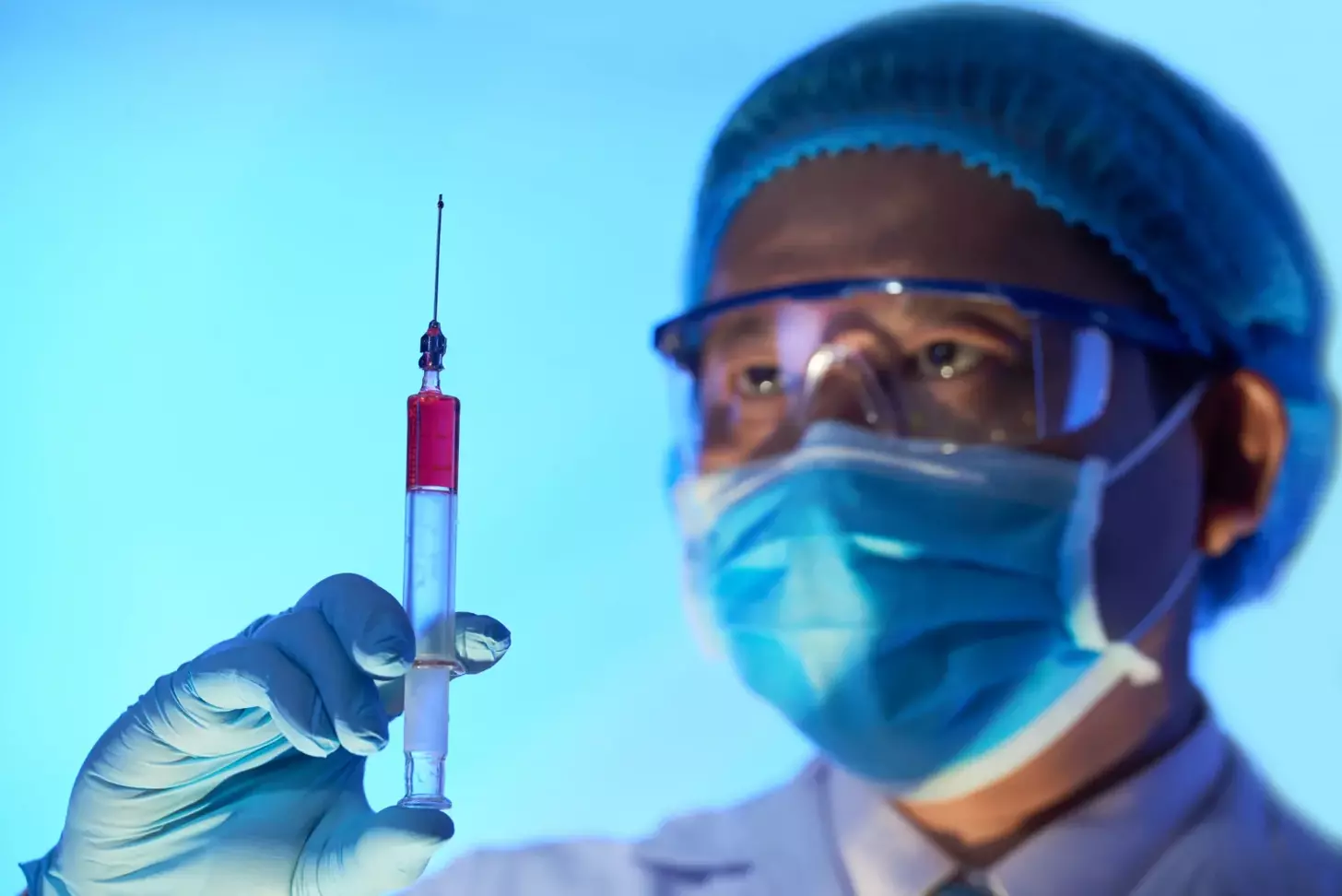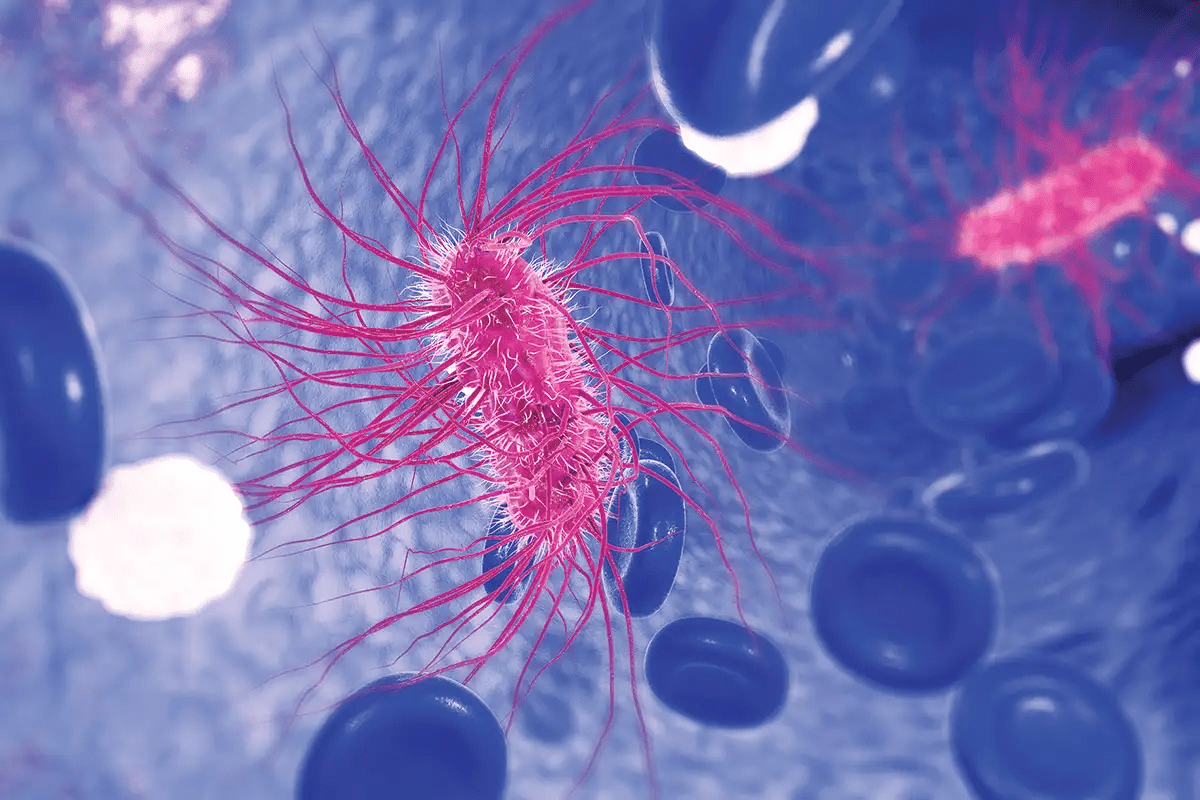Last Updated on November 27, 2025 by Bilal Hasdemir

At Liv Hospital, we are dedicated to top-notch healthcare for international patients. CAR T cell therapy, a type of immunotherapy, changes cancer treatment. It uses the patient’s own T cells, engineered to fight and kill cancer cells.
The LAURA trial found osimertinib helps a lot with a certain lung cancer. This shows new treatments can make a big difference. Knowing the side effects of CAR T cell therapy is key to helping patients.
Key Takeaways
- CAR T cell therapy is a groundbreaking cancer treatment that uses genetically engineered T cells.
- Understanding the side effects of CAR T cell therapy is essential for effective patient care.
- Liv Hospital is at the forefront of providing innovative cancer treatments.
- The LAURA trial demonstrated the efficacy of osimertinib in treating specific types of lung cancer.
- Immunotherapy, including CAR T cell therapy, offers new hope for patients battling cancer.
The Revolutionary Science of CAR T Cell Therapy
CAR T cell therapy is changing how we treat some cancers. It starts by taking a patient’s T cells. Then, it makes them genetically modify to find and kill cancer cells. After that, these T cells are put back into the patient.
What Is CAR-T Therapy and How It Works
CAR-T therapy uses the body’s immune system to fight cancer. It begins with apheresis, taking T cells from the blood. These T cells are then genetically engineered to find a specific protein on cancer cells.
After being modified, these CAR T cells are multiplied and reinfused into the patient. They can then target and destroy cancer cells better than regular T cells.
The Role of White Blood Cells in Fighting Cancer
White blood cells are key in fighting infections and diseases, including cancer. T lymphocytes or T cells are vital in this fight. CAR T cell therapy boosts this by making T cells target cancer cells.
| Type of White Blood Cell | Function | Role in Cancer Treatment |
|---|---|---|
| T Cells | Cell-mediated immunity | Engineered in CAR T cell therapy to target cancer cells |
| B Cells | Antibody production | Can be involved in immunotherapy, though not directly in CAR T cell therapy |
| Natural Killer Cells | Destroy infected cells or tumor cells | Play a role in cancer immunosurveillance |
Research is moving fast, with Google’s DeepMind working to understand cell behavior. This could make CAR T cell therapy even more effective.
Key Insight #1: Transforming Cancer Treatments and CAR T Cell Therapy Success Rates
CAR T cell therapy has changed cancer treatment, bringing hope to patients everywhere. It has shown great success, mainly in blood cancers.
Remission Rates of 50-90% in Blood Cancers
One big plus of CAR T cell therapy is its high remission rates in blood cancers. Studies show it can lead to remission rates from 50% to 90%. This depends on the cancer type.
In cases of relapsed or refractory diffuse large B-cell lymphoma, CAR T cell therapy has shown up to 50% complete remission. This is great news for those who’ve tried other treatments without success.
Comparing CAR T Cell Therapy to Traditional Cancer Treatments
Comparing CAR T cell therapy to traditional treatments shows some big differences. Unlike chemotherapy or radiation, CAR T cell therapy uses the immune system to fight cancer. It’s a targeted approach.
This method can be more effective and have fewer side effects. CAR T cell therapy can also lead to long-lasting responses in some patients. This is not always true with traditional treatments.
Traditional treatments aim to shrink tumors or slow disease growth. CAR T cell therapy, on the other hand, reprograms immune cells to attack cancer cells directly.
The SINDAS trial showed improved survival rates with upfront radiation in certain cancers. Such findings highlight the promise of new treatments like CAR T cell therapy in changing cancer care.
Key Insight #2: The Seven FDA-Approved CAR-T Therapies
The field of cancer treatment has seen a big change with the approval of seven CAR-T therapies. These treatments have shown great success in clinical trials. They work best for patients with certain blood cancers.
Detailed Overview of Approved Treatments
There are now seven CAR-T cell therapies approved by the FDA. These include:
- Tisagenlecleucel (Kymriah): Approved for treating certain B-cell lymphoma and acute lymphoblastic leukemia.
- Axicabtagene ciloleucel (Yescarta): Approved for treating certain B-cell lymphoma.
- Brexucabtagene autoleucel (Tecartus): Approved for treating mantle cell lymphoma and certain B-cell lymphoma types.
- Lisocabtagene maraleucel (Breyanzi): Approved for treating certain B-cell lymphoma types.
- Idecabtagene vicleucel (Abecma): Approved for treating multiple myeloma.
- Ciltacabtagene autoleucel (Carvykti): Approved for treating multiple myeloma.
- Tisagenlecleucel (Kymriah) for a different indication.
Each therapy targets specific cancer types. This gives new hope to patients who have tried other treatments without success.
Target Cancer Types for Each Therapy
The approved CAR-T therapies target various blood cancers, including:
- B-cell lymphoma: Several CAR-T therapies are approved for different B-cell lymphoma subtypes.
- Acute lymphoblastic leukemia (ALL): Tisagenlecleucel (Kymriah) is approved for ALL treatment.
- Mantle cell lymphoma: Brexucabtagene autoleucel (Tecartus) is approved for this type.
- Multiple myeloma: Idecabtagene vicleucel (Abecma) and Ciltacabtagene autoleucel (Carvykti) are approved for multiple myeloma treatment.
A leading oncologist notes, “The approval of these CAR-T therapies is a big step forward in blood cancer treatment. It offers patients a potentially curative option.”
“CAR-T cell therapy has changed how we treat certain blood cancers. It gives new hope to patients who have tried other treatments without success.”
While these therapies are very effective, it’s important to keep watching their long-term effects and any side effects.
Key Insight #3: The CAR T Cell Infusion Process
Exploring the CAR T cell infusion process shows the journey patients take. It starts with apheresis and ends with reinfusion. Each step needs careful planning and specialized care for the best results.
From Apheresis to Reinfusion: The Patient Journey
The process starts with apheresis, where white blood cells are taken from the blood. These cells then go to a lab for genetic changes. They are made to fight cancer cells.
This step takes weeks. During this time, patients might get preparatory chemotherapy. This clears their immune system for the new cells.
When the CAR T cells are ready, patients go back to the hospital. The infusion takes less than an hour. But the treatment doesn’t end there. Patients need close watch for side effects.
Hospital Protocols and Specialized Care Requirements
The treatment’s side effects can be serious. So, hospital protocols are strict. Patients must stay close to the treatment center for weeks. This is to get quick help if needed.
Specialized care teams work together. They include oncologists, nurses, and more. They manage patient care and handle any problems.
AI is helping make “virtual cells.” These can predict how cells react to treatments. This could make CAR T cell therapy safer and more effective.
In summary, CAR T cell infusion is a complex treatment. It needs careful planning, strict hospital protocols, and dedicated specialized care. As this field grows, we’ll see better results and more use of this therapy.
Key Insight #4: Understanding CAR-T Side Effects
CAR T cell therapy has changed cancer treatment, but it comes with challenges. Managing side effects is key for both doctors and patients.
Cytokine Release Syndrome: The Most Common Complication
Cytokine Release Syndrome (CRS) is a major side effect of CAR T cell therapy. It happens when CAR T cells release a lot of cytokines, causing a big reaction in the body. Symptoms can be mild, like fever, or severe, like organ problems.
Doctors are working hard to make CAR T therapy safer. A study in EHO Online shows new ways to deal with CRS and other side effects.
Neurotoxicity and “Brain Fog” After Treatment
Neurotoxicity, or “brain fog,” is another big side effect. It can cause confusion, trouble speaking, and even seizures. The exact cause is being studied, but it’s thought to be related to cytokines affecting the brain.
Dealing with neurotoxicity needs a team effort, including neurologists and careful monitoring.
Immune System Suppression Risks
CAR T cell therapy can weaken the immune system, making patients more prone to infections. This is partly because of the chemotherapy before the therapy and the therapy itself. Patients need close monitoring and may need medicines to prevent infections.
Knowing about these side effects is key to safely using CAR T cell therapy. By understanding the risks and finding ways to reduce them, doctors can help more patients while keeping complications low.
Key Insight #5: Innovations in Reducing CAR-T Therapy Complications
As we dive deeper into CAR T cell therapy, we’re focusing on reducing CAR-T complications to better patient outcomes. The medical world is working hard to lessen the side effects of this groundbreaking treatment.
New Protocols for Side Effect Management
One key area is new protocols for side effect management. Scientists are racing to find better ways to handle CAR T cell therapy’s side effects. These can be mild or severe. By refining these methods, we can greatly improve patients’ lives during treatment.
Clinical trials, like the NORTHSTAR trial, are testing new strategies for patients with certain types of lung cancer. These trials are essential for finding the best ways to manage side effects and improve patient results.
Predictive Biomarkers for Adverse Reactions
Another important area is finding predictive biomarkers for adverse reactions. By identifying which biomarkers are linked to specific side effects, we can predict which patients are at risk. This lets us take steps to reduce these risks.
The use of predictive biomarkers is a big step towards personalized medicine. It allows us to customize treatments based on each patient’s genetic makeup and medical history. This not only makes CAR T cell therapy safer but also more effective.
Our dedication to keeping our protocols up-to-date and improving quality is shown in our ongoing research. By continually innovating and refining CAR T cell therapy, we ensure it remains a leading cancer treatment.
Key Insight #6: Expanding Beyond Blood Cancers to Solid Tumors
Researchers are now looking into using CAR T cell therapy for solid tumors. This move is a big step forward in immunotherapy. It brings new hope for people with different cancers.
Current Research in Solid Tumor Applications
Studies are showing good results in using CAR T cell therapy for solid tumors. For example, the LONESTAR trial has shown it works well against certain cancers. Scientists are working on finding better targets and improving CAR T cell designs.
Key areas of research include:
- Identifying specific antigens on solid tumors that can be targeted by CAR T cells
- Enhancing the persistence and infiltration of CAR T cells into solid tumors
- Overcoming the immunosuppressive microenvironment of solid tumors
Challenges in Treating Different Cancer Types
There are many challenges in using CAR T cell therapy for solid tumors. These include the variety of solid tumors, the tumor’s ability to suppress the immune system, and the risk of harming healthy cells.
Comparing CAR T cell therapy results in different cancers is important. It helps us understand its full range of possibilities. Here’s a table that highlights some key differences:
| Cancer Type | CAR T Cell Therapy Challenges | Current Research Focus |
|---|---|---|
| Blood Cancers | Lower risk of off-target effects | Improving remission rates and durability |
| Solid Tumors | Heterogeneity, immunosuppressive microenvironment | Target identification, improving CAR T cell infiltration |
By tackling these challenges and focusing on ongoing research, we can make CAR T cell therapy better for more cancers.
Key Insight #7: Next-Generation CAR T Cell Therapies
Next-generation CAR T cell therapies are changing immunotherapy with better targeting. They are making cancer treatment more effective. These new methods are set to greatly improve how we fight cancer.
Dual and triple-targeted CAR T cell therapies are leading the way. They attack cancer cells by targeting more than one antigen. This helps avoid the problem of cancer cells evading treatment by changing their antigens.
Dual and Triple-Targeted Approaches
Dual-targeted CAR T cell therapies target two different antigens on cancer cells. This makes treatment more precise and less likely to fail. A study in the Journal of Clinical Oncology showed these cells work better for some cancers.
Triple-targeted CAR T cells target three antigens. This approach can tackle tumors more effectively. An oncologist believes targeting multiple antigens is key to beating cancer’s complexity.
Overcoming Treatment Resistance Mechanisms
One big challenge in CAR T cell therapy is treatment resistance. New therapies aim to solve this by different methods. Some use checkpoint inhibitors to help CAR T cells last longer and work better. Others release cytokines to improve the tumor environment.
AI and machine learning are also helping. They predict how CAR T cells will react to treatments. This is making drug development faster and more accurate.
“AI-driven insights are streamlining drug development and helping to identify possible resistance mechanisms early on.”
This mix of technology and immunotherapy is speeding up the creation of better CAR T cell therapies.
Looking ahead, next-generation CAR T cell therapies are very promising. They use new strategies and tackle resistance head-on. This could lead to more lasting and widespread cancer cures.
The Economics and Accessibility of CAR-T Transplant Therapy
This therapy takes a patient’s T cells, changes them to fight cancer, and puts them back in the body. It’s a breakthrough for some blood cancers. But, it’s expensive and hard to administer, making it tough for many to access.
“The future of CAR T cell therapy lies not only in its clinical efficacy but also in its economic sustainability and accessibility.” –
Research on compounds like Lithocholic Acid (LCA) is also promising. It could help improve healthspan without losing muscle. This research shows the need for more investment in cancer treatment.
As we move forward, we must keep an eye on CAR T cell therapy’s economic and accessibility issues. This will help make cancer treatment more sustainable and fair for everyone.
Conclusion: The Future Landscape of CAR T Cell Immunotherapy
Looking back, CAR T cell therapy is changing how we fight cancer. It has shown great success in blood cancers, with remission rates up to 90%. Now, researchers are working on using it for solid tumors too.
New ideas, like “virtual cells,” could make cancer treatment even better. The field is growing fast. We’re seeing new ways to handle side effects and predict problems.
As CAR T cell therapy gets better, it might help more people. Scientists are looking into ways to target cancer in different ways. This could lead to even more effective treatments for more patients.
FAQ
What is CAR T cell therapy?
CAR T cell therapy is a way to fight cancer. It takes T cells from your blood, changes them to attack cancer, and then puts them back in your body.
How does CAR T cell therapy work?
It uses your own T cells to fight cancer. First, T cells are taken out. Then, they’re changed to recognize cancer cells. After that, they’re put back in to attack the cancer.
What are the common side effects of CAR T cell therapy?
Side effects include cytokine release syndrome, neurotoxicity, and weakened immune system. Cytokine release syndrome is serious and can be life-threatening. It happens when CAR T cells release a lot of cytokines. Neurotoxicity can cause confusion and trouble speaking. A weakened immune system makes you more likely to get sick.
What is cytokine release syndrome?
It’s a serious condition caused by CAR T cells releasing a lot of cytokines. Cytokines help fight infections and inflammation. In bad cases, it can cause high fever, low blood pressure, and organ failure.
How is CAR T cell therapy administered?
It’s given through a process called apheresis. T cells are taken from your blood. Then, they’re changed with the CAR gene in a lab. After that, they’re put back in your body.
What is the success rate of CAR T cell therapy?
Success rates vary by cancer type. For blood cancers like leukemia and lymphoma, it works 50-90% of the time. But, it’s less effective for solid tumors.
Are there any FDA-approved CAR T cell therapies?
Yes, seven CAR T cell therapies are FDA-approved for blood cancers. Examples include Yescarta, Kymriah, and Breyanzi.
Can CAR T cell therapy be used to treat solid tumors?
CAR T cell therapy is promising for blood cancers but is being researched for solid tumors too. Trials are looking at its safety and effectiveness in solid tumors like glioblastoma and ovarian cancer.
What are the challenges in applying CAR T cell therapy to solid tumors?
Challenges include the tumor environment and tumor heterogeneity. The environment can block CAR T cells, and tumors are diverse, making it hard to find a single target.
What are next-generation CAR T cell therapies?
Next-generation therapies target multiple antigens on cancer cells. This aims to overcome resistance by attacking from different angles. These are being tested in clinical trials.
How can I access CAR T cell therapy?
Talk to your doctor or a specialist in hematology or oncology. They can see if CAR T cell therapy is right for you and help you through the process.
References
- National Cancer Institute. CAR T Cells in Cancer Treatment. https://www.cancer.gov/about-cancer/treatment/research/car-t-cells
- The Harvard Gazette. Unlocking the promise of CAR T. https://news.harvard.edu/gazette/story/2025/06/unlocking-the-promise-of-car-t/
- CU Anschutz / News. New CAR‑T Cell Therapy Shows Promise for Hard‑to‑Treat Cancers. https://news.cuanschutz.edu/cancer-center/new-car-t-cell-therapy-shows-promise-for-hard-to-treat-cancers (news.cuanschutz.edu)
- Stanford Medicine News. Brain fog after CAR T: new findings. https://med.stanford.edu/news/all-news/2025/05/brain-fog-car-t.html








